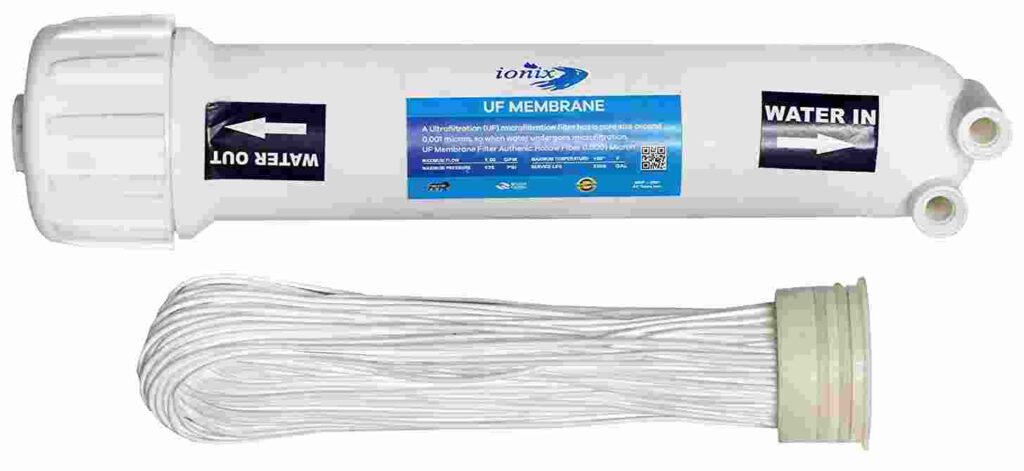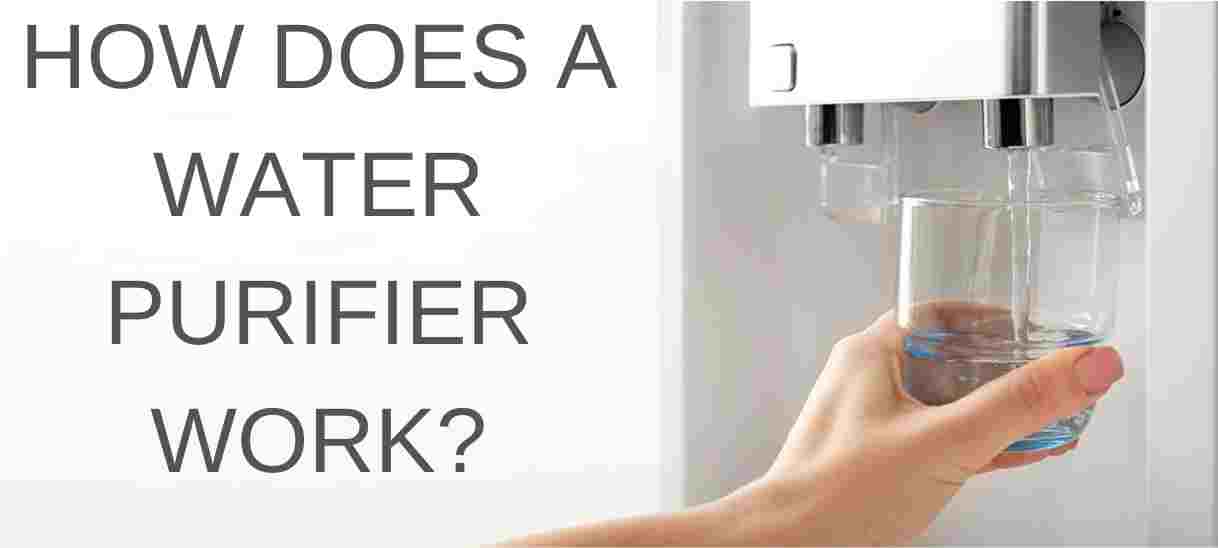Water purifiers play an important part in efficiently filtering water and it is designed to attract impurities like soil and rust into a separate chamber. A water purifier is made to remove a lot of harmful substances from water such as bacteria, viruses, and other contaminants.
These contaminants may damage the quality of the water and degrade the value of the water by making it undrinkable. Water purifiers are used for removing impurities from the water surface for drinking and cooking.
Since the water purifier works to effectively remove harmful substances in water, they can be used only where safe drinking water is a concern.
There is no doubt that getting your drinking water from an unfiltered source is a man-made disaster. And despite the awareness that we need some clean water from a supervised source, it’s not a desirable option for all. That’s why you need a water purifier.
Water purifiers may be found everywhere but few might be able to tell you exactly how they work. Using a water purifier is as easy as following the instructions that come with it.
However, there is a way to better understand how a water purifier works which could help lower costs on your unit’s operation, increase your output, and ultimately, save more time.
Nowadays there are many types of water filters available in the market with different technologies. Such as RO, UV, UF, TDS Controller, Mineraliser, etc. Like Aqua Grand Water Purifiers it comes with RO, UV, UF, TDS Controller, etc. Let us know what is the difference between all these water purifiers.
RO (Reverse Osmosis)
Before knowing Reverse Osmosis, let us know about Osmosis.
Osmosis
In the process of osmosis, suppose there is a container. And a semipermeable membrane in the middle of the container, which will allow only water to pass through and not any impurity. In which there is clean water on one side and impure water on the other.
Naturally in osmosis, there is a difference in concentration due to clean water and impure water. So the water with low concentration i.e. clean water goes to the other side through that semipermeable membrane so that the concentration on both sides becomes equal.
Reverse Osmosis
In reverse osmosis, pressure is applied from the outside on the side where the impure water is so that the impure water moves through the semipermeable membrane to the other side while the impurities remain on that side. Due to this, we get absolutely clean water on one side.
In the RO process, the pore size of that semipermeable membrane can be up to 0.0001 µm. And because of this, solids dissolved in water like salt, arsenic, lead, and even essential minerals like calcium, and magnesium are also removed in the RO process.

UV (Ultraviolet)
Expensive UF filters also have the feature of UV. UV (Ultra Violet) rays are not visible to us, it is of a longer wavelength than visual light and is dangerous for us. The same UV rays are used to kill those bacteria, pathogens, and viruses that have survived the process of UF or RO.
In this, water is passed in a stainless steel chamber and UV light is emitted from a UV lamp which kills the bacteria present in the water and damages their DNA so that they are unable to reproduce or multiply.
In this way, 99.9% of bacteria and germs are killed in the UV filter. Electricity is used for UV and its job is only to kill bacteria, it does not remove chemicals or dissolve salts.
UF (Ultra-Filtration)
First, let’s talk about UF. Only ultra-filtration (UF) filters come at a very low cost as they do not require electricity. It works with gravity.
There are many hollow white fibers in the UF chamber that are made of polymer. These holo fibers are semi-permeable membranes with a pore size of 0.01- 0.1 micrometer or micron, which allows water to pass but Does not allow impurities like silt, toxins, bacteria, viruses, etc to pass.
Although some small impurities viruses, and bacteria cross the semipermeable membrane, UF does not remove the dissolved salts and minerals in the water. This means it does not soften hard water. Apart from ultrafiltration, there is also microfiltration and nanofiltration.

Pore Size
| UF- Ultrafiltration | 0.01-0.1 micrometer |
| MF- Microfiltration | 0.1-10 micrometer |
| NF- Nanofiltration | 0.001-0.01 micrometer |
Activated Carbon / Charcol
UF filters also contain carbon blocks or activated carbon which are very porous. And it’s surface area and adsorption capacity are very high.
In this, water passes through the pores and impurities like chlorine are adsorbed or trapped in the activated carbon and it also removes the bad odor of the water. However, activated carbon does not soften the water and also allows microbes trends to pass through it.
Pores Size
| Micropores | < 1nm |
| Mesopores | 25nm |
| Macropores | > 25nm |
TDS (Total Dissolved Solids)
- All dissolved solids in water such as salt, metals, minerals, etc are counted as TDS.
- TDS unit is PPM (parts per million) or mg/liter eg.. 100, 200, 500, 1000.
- More TDS means more solids are dissolved in the water.
- TDS denotes the hardness or softness of water.
Generally, people believe that more TDS means bad water and less TDS means good water but it is not so. TDS contains salts or other impurities like sodium, bicarbonates, chlorides, sulfates, arsenic, lead, copper, chlorine, iron, zinc, etc.
Apart from this, minerals such as calcium, magnesium, sodium, potassium, phosphorus, etc. are also counted in TDS. That is, water with low TDS will also have fewer minerals.
As RO reduces the TDS of water by up to 90%. This means that 90% of the impurities have been eliminated, then 90% of the minerals have also been reduced with it.
Packaged Water
Normally the TDS of packaged water is less than 50 PPM, this means that the water is pure but lacks minerals. Unhealthy for long-term consumption can lead to weak bones, fatigue, etc.
But there is also some packaged water in the market whose TDS remains up to 300 PPM. 300 PPM does not mean that the water is dirty, it means that it is rich in minerals that our body needs.
So friends, very little TDS-like water of fewer than 50 TDS will be safe and will also quench our thirst, but by drinking such water continuously, there can be a lack of minerals in our body. Due to this, there can be problems like weak bones, fatigue, and weak immunity.
TDS
| 100-300 TDS | Safe and healthy to drink. |
| 300-500 TDS | Acceptable to drink. |
| 500+ TDS | Hard water- Don’t drink (Might affect health). |
If your water does not contain harmful substances like arsenic, lead, or fluoride, then you can take a filter without RO which will retain the minerals. RO purifiers usually come with a TDS controller that ensures that it retains the minerals in your water. Let us know further how it works.
How Water Purifier Works
Now we will know about the water purifier with RO + UV + UF + TDS Controller features so that you will also get information about the purifier with fewer features. Here are the filter parts through which provided water gets filtered.
Pre-Filter
Pre-filter is the very first part of the water purifier. The tap water we receive directly enters the pre-filter. The pre-filter assists to eliminate the solid particles discovered in the water. It’s fitted with a 5-10 micron sponge that assists in separating these solid impurities from the water.
Sediment Filter
Water enters the sediment filter after the pre-filter. Sediment is the very first filter in the water purifier. It eliminates other impurities in the water.
Activated Carbon / Charcol
Water enters the carbon filter in the third stage. it passes through the activated carbon chamber, then many types of impurities are trapped by adsorption, a catalytic reaction. And here chlorine, odor, and other impurities are also removed from the water.
RO (Reverse Osmosis)
Water passes through the Reverse Osmosis (RO) membrane in the next stage of water purification. RO membrane reduces 90% of high TDS (Total Dissolved Solids) of water.
The pore size of the RO membrane is 0.0001 microns which easily reduces the harmful Dissolve solids. Due to this 90% of the impurities and bacteria stop here. Hard water becomes soft as TDS is reduced by 90%.
UV (Ultraviolet)
After RO (reverse osmosis) water enters the UV membrane, this is additionally known as ultraviolet rays. After the entire process of filtration, if there are any small impurities or germs left in the water, then UV light kills these germs and makes the water germ-free.
UF (ultrafiltration) Membrane
Water enters UF (Ultrafiltration) membrane in the fifth stage. This is the final filtration stage in a water purifier. UF membrane removes those impurities which remain after all the stages of purification.
Mineral Cartridge
Water has become totally clean after UF filtration. Now, these stages of purification make water drinkable. We may now drink this water and use it for cooking.
Now, these mineral cartridges maintain the balance of healthy minerals in the water. Taking pure water for a long time is harmful to our health. So to keep the body healthy it is necessary to have useful minerals in the water.
TDS (Total Dissolved Solids) Adjuster
TDS adjuster is a much-needer part after mineral cartridges. In the TDS adjuster, there is a screw that you can adjust according to the TDS level of your water.
According to WHO, the TDS level of your water should be between 60-120 PPM, which is drinkable. For example, if your water shows 500 PPM, then you can set it between 60-120 PPM.
After passing through all these steps, your water becomes clean, safe, drinkable, and tasty. After eliminating all the harmful germs and dust mites in it, now this water is safe for you and your family members.
Our Words
It should be kept in mind that TDS should not be too low. For example, the water of 0 TDS is called distilled water. It is pure water but no smell, taste, or essential minerals are present in it.
So one should not drink such water because the water should not only be clean but also healthy. For this, some filters also use mineralizers, which add minerals separately to the water.
If the TDS of your water is less, then you do not need RO. You’ll also get great water with a UV, UF water filter. But if the water in your area has very high TDS like 500, 600, 1000, or even more, or if your water contains harmful substances like arsenic, lead, or fluoride then you must take RO.
Nowadays people believe that RO water is the best and lower TDS is better but it is not so. The water should be clean but mineralized even if the TDS is 300.
So friends, after taking all this information, you should choose your water purifier so that you and your family have good health.
Read More
Aqua Grand Water Purifiers (RO+UV+UF)- Full Information & Key Features
Aqua Grand Water Purifiers: The Top Choice for Consumers
The Unbeatable Combination: Durability and Affordability of Aqua Grand Water Purifiers
How Does A Water Purifier Work?
Features Of Aqua Grand Water Purifiers
Technical Features Of Aqua Grand Water Purifiers
